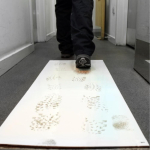Application
Useful for the proteolytic inactivation of nucleases during the isolation of DNA and RNA.Removes endotoxins that bind to cationic proteins such as lysozyme and ribonuclease A.Reported useful for the isolation of hepatic, yeast, and mung bean mitochondriaDetermination of enzyme localization on membranesTreatment of paraffin embedded tissue sections to expose antigen binding sites for antibody labeling.Digestion of proteins from brain tissue samples for prions in Transmissible Spongiform Encephalopathies (TSE) research.
The product has been used to study its pre-treatment effects on the silk fibroin. The aspects analysed in this study included the crystallographic properties of hydroxyapatite (HAp), and the microstructure and microhardness of the composites. The enzyme has also been used to facilitate the access of probes to rRNA using FISH techniques to detect pathogenic Staphylococcus aureus.
Proteinase K from Tritirachium album has been used:in bovine endometrial epithelial cells for herpes viral DNA extractionfor viral RNA extraction from nasal swabsas a component of phase lock and direct PCR lysis buffer
Biochem/physiol Actions
Proteinase K is a stable and highly reactive serine protease. Evidence from crystal and molecular structure studies indicates the enzyme belongs to the subtilisin family with an active-site catalytic triad (Asp39-His69-Ser224). It is stable in a broad range of environments: pH, buffer salts, detergents (SDS), and temperature. In the presence of 0.1-0.5% SDS, proteinase K retains activity and will digest a variety of proteins and nucleases in DNA preparations without compromising the integrity of the isolated DNA.
Proteinase K has a broad specificity and degrades many proteins even in the native state. It mainly cleaves the peptide bond adjacent to the carboxyl group of aliphatic and aromatic amino acids with blocked ?-amino groups. The molecular weight of proteinase K from amino acid sequence is found to be 28,930 Da and from SDS-PAGE, it is found to be 28,500 Da. The optimum pH is between 7.5-9.0 and its isoelectric point is 8.9. Ca2+ (1-5 mM) is required for its activation. Proteinase K is inhibited by DIFP (diisopropylfluorophosphate) or PMSF (phenylmethylsulfonyl fluoride).
Legal Information
PicoGreen is a registered trademark of Life Technologies
Physical form
Solution in 40% glycerol (v/v) containing 10 mM Tris-HCl, pH 7.5, with 1 mM calcium acetate.
Unit Definition
One unit will hydrolyze urea-denatured hemoglobin to produce color equivalent to 1.0 µmole of tyrosine per min at pH 7.5 at 37?°C (color by Folin-Ciocalteu reagent).








